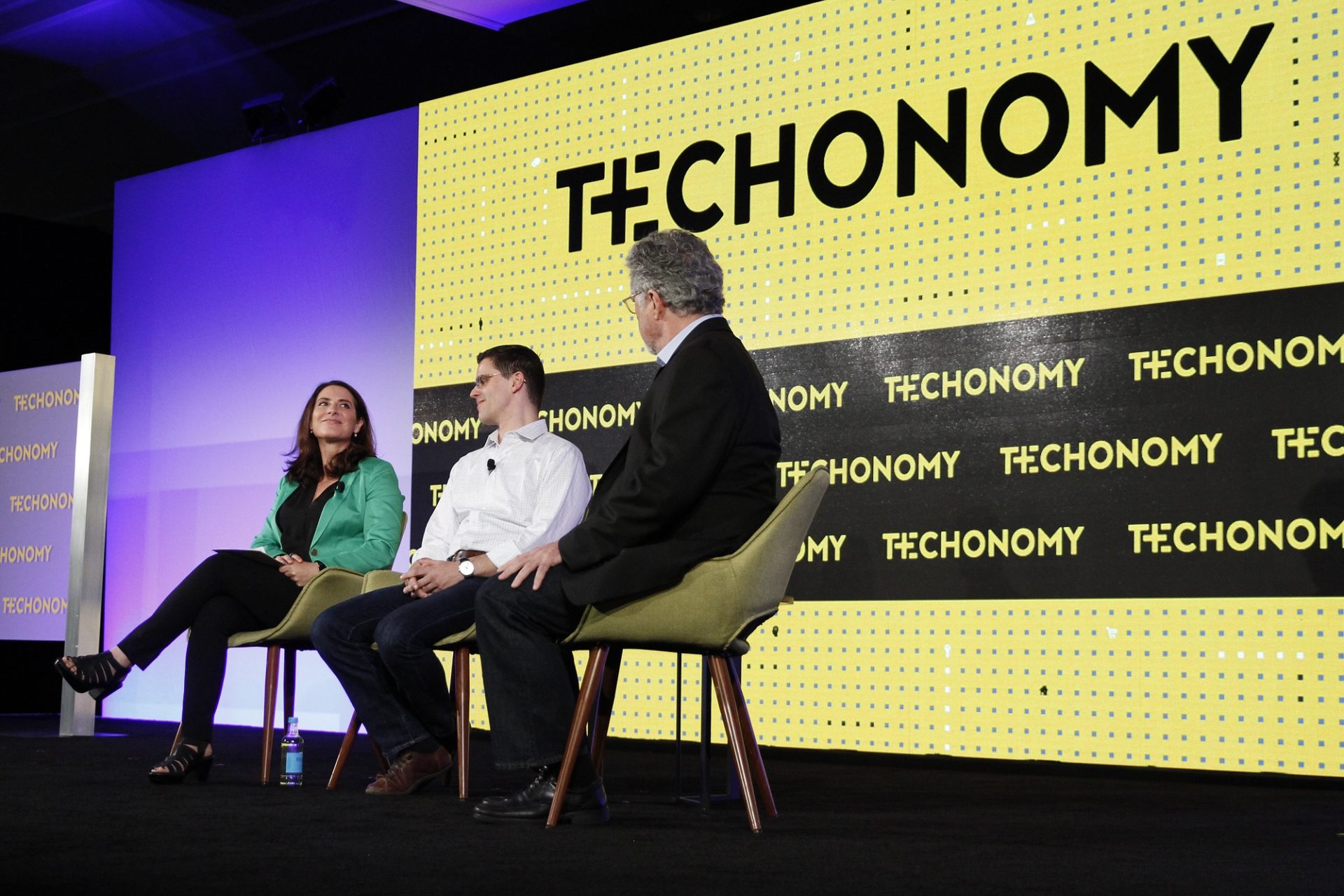
Speakers in a climate change session at Techonomy 2016 in early November aimed to dispel the stigma associated with two controversial technologies that might help address the climate change caused by humankind’s use of fossil fuels. Nuclear power is a reasonable way to create energy without creating carbon dioxide, said one speaker, while the other argued for geo-engineering as a way to combat climate change at the atmospheric level, counteracting the impact of carbon dioxide that has already been emitted.
Rachel Pritzker of the Pritzker Innovation Fund made a compelling case for nuclear energy. Often seen as risky and causing more harm than good, nuclear energy has not been widely accepted a viable clean energy alternative since the Three Mile Island nuclear accident in 1979 and the even more disastrous one at Chernobyl in the Ukraine in 1986. However, Pritzker noted that nuclear energy still provides 20% of U.S. power today, compared to just 4.5% of power provided by all renewable energy sources such as wind and solar.
She told conference attendees that one reason people are starting to discuss nuclear energy again is the wave of innovation targeted at making use of nuclear waste and other improvements to the power production process. Bill Gates and Peter Thiel, she said, are both vocal advocates for advanced nuclear energy, and some 50 companies in the U.S. are currently working to make it more palatable for consumers. While opponents tend to focus on the challenge of disposing of nuclear waste, Pritzker said, this energy source has real benefits. It can produce a lot of power on a small physical footprint, and the waste it creates is contained, making it in some ways safer than other power production methods. She noted, for example, that a considerable amount of radiation gets dispersed in the atmosphere in the smoke produced by the burning of coal.
The other speaker, Gernot Wagner from Harvard, talked about reversing the effects of climate change by taking a lesson from volcanoes. When volcanoes erupt, he said, they spew tiny particles into the outer layers of the atmosphere. These reflect sunlight away from Earth, cooling the planet in the process. His “taboo” concept is stratospheric aerosol injection, or seeding the stratosphere with small reflective particles that would artificially cool the planet and help rein in the effects of climate change. “Nobody is doing this,” Wagner said, but more and more reputable scientific organizations are now giving such geo-engineering serious study.
Wagner noted that there are tradeoffs to these and other means of addressing climate change. Deploying particles into the atmosphere could have unintended consequences and is on its face another type of pollution; on the other hand, cooling the planet even a bit could give us enough time to come up with other, more effective solutions to the climate change crisis.
“I don’t think there’s a silver bullet for addressing climate change,” Pritzker said, adding that the demand for more clean energy is tremendous and rapidly growing. “We can’t take any potentially great technologies off the table.”
The “Can These Taboo Techs Solve Climate Change?” session video can be found in its entirety on the Techonomy 2016 Conference Report page.
TE16: Climate Change Calls for “Taboo Techs”
Speakers on climate change at TE16 aimed to dispel the stigma associated with nuclear power and geo-engineering–controversial technologies that might help address the climate change caused by humankind’s use of fossil fuels. One said that radiation risks are actually a problem with coal-fueled power, too.
















